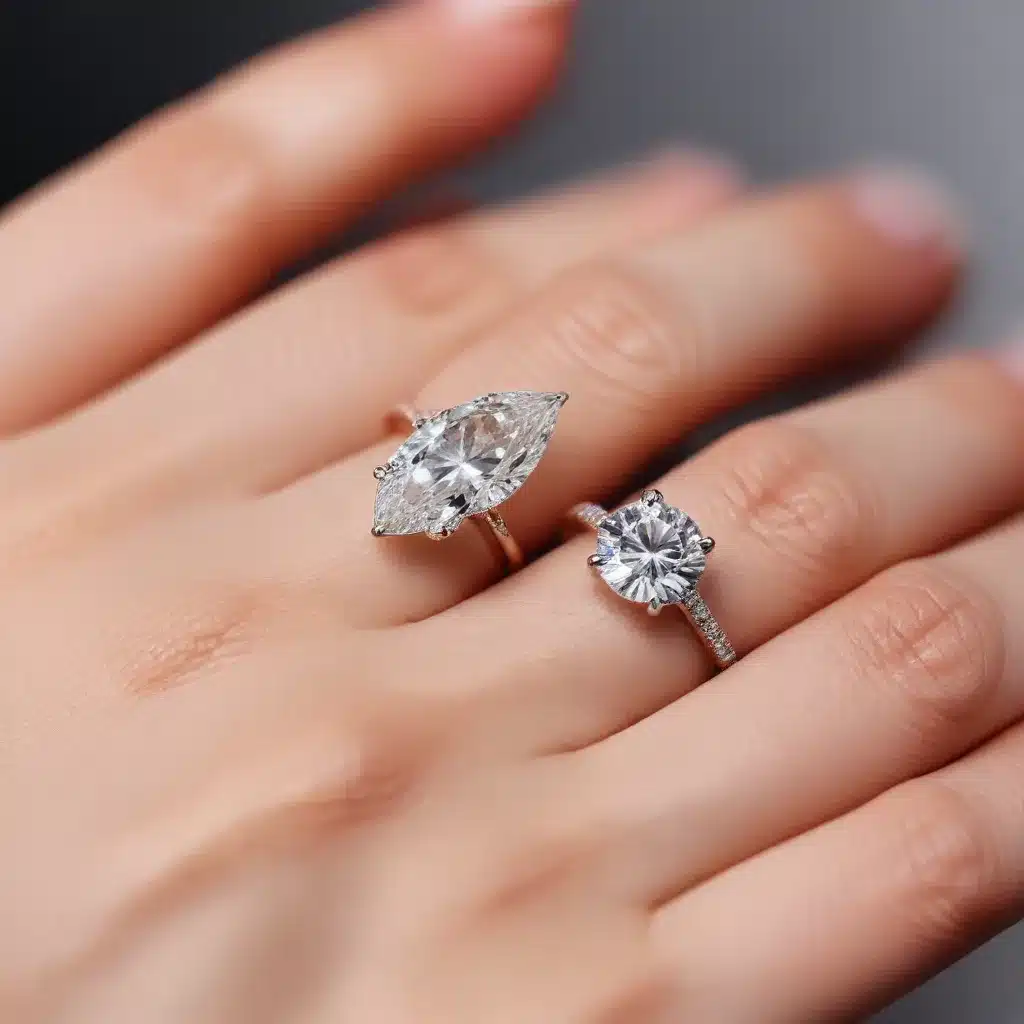
The age-old allure of diamonds has captivated humanity for centuries, symbolizing love, prestige, and timeless elegance. However, the diamond industry has long grappled with ethical and environmental concerns surrounding the extraction of these coveted gems. Enter a revolutionary solution: lab-grown diamonds. These scientifically-cultivated marvels are not only identical to their mined counterparts in every way but also offer a sustainable and ethical alternative that is reshaping the landscape of luxury jewelry.
Diamond Formation and Composition
To truly understand the significance of lab-grown diamonds, we must first delve into the science behind these captivating gems. Natural diamonds are formed over billions of years, deep within the Earth’s mantle, under immense heat and pressure. This arduous process results in the creation of a crystal structure that is renowned for its unparalleled hardness and refractive index, properties that give diamonds their unmatched brilliance and allure.
In contrast, lab-grown diamonds are produced through advanced scientific techniques that mimic the natural diamond-forming process. Two primary methods are employed: High Pressure High Temperature (HPHT) and Chemical Vapor Deposition (CVD). Both methods involve carefully controlling the temperature, pressure, and atmospheric conditions to stimulate the growth of diamond crystals, achieving the same chemical composition and physical properties as their mined counterparts.
The Lab-Grown Diamond Process
The HPHT method involves subjecting a tiny diamond “seed” to immense heat (up to 1,600°C) and pressure (up to 60,000 atmospheres) in a controlled environment, replicating the natural conditions found deep within the Earth’s mantle. This process can produce high-quality diamonds in a matter of weeks, a remarkable feat compared to the billions of years required for natural diamond formation.
The CVD method, on the other hand, utilizes a gas-based approach. In this technique, a hydrocarbon gas, such as methane, is broken down into its elemental components – carbon and hydrogen – using a high-energy plasma. The carbon atoms then deposit onto a substrate, gradually building up a diamond crystal structure. This method allows for even greater control over the diamond’s properties, such as color and clarity.
Environmental and Ethical Considerations
The rise of lab-grown diamonds has not only captivated the jewelry industry but also ignited a profound shift in consumer awareness and preferences. As the world becomes increasingly conscious of environmental and social impact, the appeal of lab-grown diamonds lies in their unparalleled sustainability and ethical attributes.
The environmental impact of traditional diamond mining is well-documented, with concerns ranging from habitat destruction and water pollution to the high energy consumption required for extraction. In contrast, lab-grown diamonds are produced in controlled laboratory settings, dramatically reducing the environmental footprint. Additionally, the conflict-free nature of these diamonds eliminates the ethical issues associated with the diamond trade, such as human rights abuses and the financing of armed conflicts.
Advancements in Lab-Grown Diamond Technology
As the lab-grown diamond industry continues to evolve, the quality and versatility of these synthetic gems have reached new heights. Technological advancements have enabled the production of lab-grown diamonds that are virtually indistinguishable from their natural counterparts, with equivalent optical properties, hardness, and durability.
The increased scalability of lab-grown diamond production has also led to significant cost reductions, making these exquisite gems more accessible to a wider consumer base. This democratization of luxury is a testament to the transformative power of innovation, as lab-grown diamonds challenge the traditional notion that diamonds must be scarce and expensive to be considered truly valuable.
Lab-Grown Diamonds in the Bridal Market
The bridal jewelry market has emerged as a prime battleground for the adoption of lab-grown diamonds. As modern couples seek to align their values with their purchases, the appeal of lab-grown diamonds has soared, particularly among Millennials and Gen Z consumers. These young, eco-conscious consumers are drawn to the ethical and sustainable attributes of lab-grown diamonds, ushering in a new era of conscious luxury.
Designers and jewelers have responded to this shift in consumer preferences by seamlessly integrating lab-grown diamonds into their bridal collections. The ability to customize and personalize these gems has further fueled their popularity, allowing couples to create truly unique and meaningful engagement rings and wedding bands that reflect their individual style and values.
Regulatory and Legal Aspects
As the lab-grown diamond industry continues to grow, regulatory and legal frameworks have emerged to ensure transparency and consumer protection. Stringent labeling and disclosure requirements have been implemented to distinguish lab-grown diamonds from their natural counterparts, empowering consumers to make informed choices.
Industry associations and certification bodies have also played a pivotal role in establishing standards and guidelines for the production and marketing of lab-grown diamonds. These measures have helped to build trust and confidence in the lab-grown diamond market, ensuring that consumers can enjoy the beauty and brilliance of these innovative gems with the assurance of ethical and sustainable sourcing.
The future of the diamond industry is undoubtedly intertwined with the rise of lab-grown diamonds. These scientifically-crafted gems not only rival the beauty and quality of natural diamonds but also offer a sustainable and ethical alternative that is reshaping the landscape of luxury jewelry. As technology continues to advance and consumer preferences evolve, the sparkling revolution of lab-grown diamonds is set to redefine the very essence of what it means to own a truly remarkable diamond. To explore the exquisite collection of lab-grown diamond jewelry, visit Shelby Gem Factory and discover the future of ethical bridal luxury.

